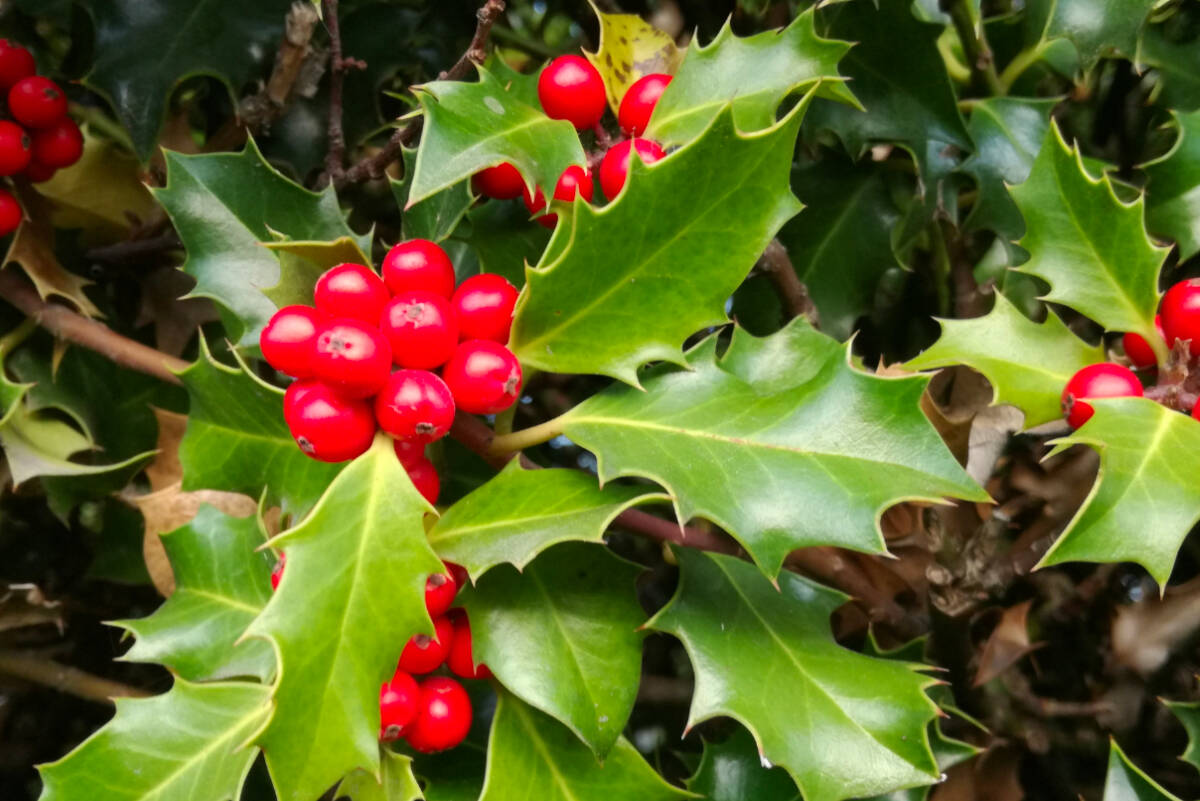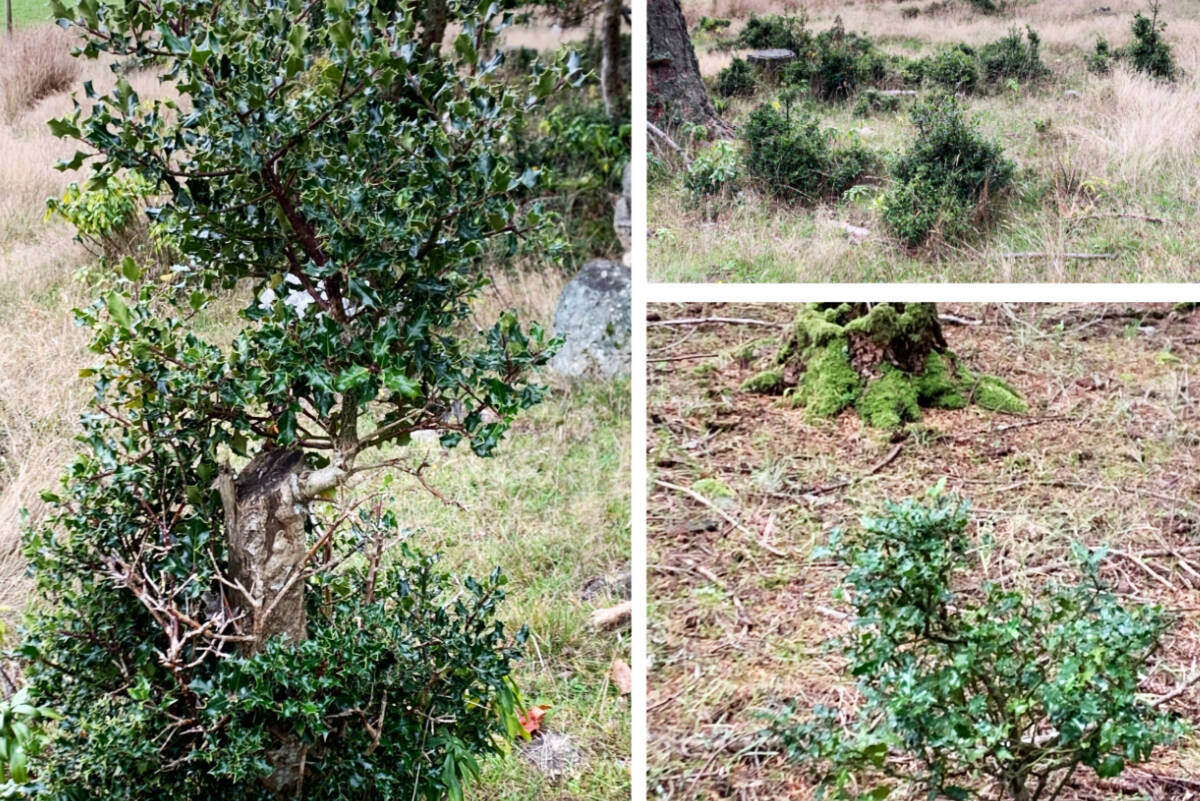Ask an Arborist: Why holly trees aren’t as ‘jolly’ as they appear

Holly’s cheery red berries can easily be mistaken as ‘edible’ by young children and pets.
Jared Witt Owner of Osprey Tree Service in Victoria’s West Shore is back to share why holly trees, while pretty during the holidays, are bad news for our local woodlands.
Are holly trees really all that bad? They’re so pretty at Christmas and they’re tolerant of the droughts we’ve been having too!
With their charming sprigs of green and red, holly is as quintessential to the holidays as a Christmas tree. We find it in literature, holiday music and throughout various traditions, so it may come as a surprise that here in Victoria, holly is in fact anything but jolly.
Originating in the United Kingdom and Europe, holly trees gained favour for their drought tolerance and year-round colourful nature, which is also how they landed their seasonal gig as popular floral decor. Unfortunately, their drought tolerance and hardy nature is also what’s made them an incredibly successful, invasive species in the Capital Regional District.
“Holly trees (Ilex aquifolium), actively outcompete and displace our native plants, causing imbalances in the local ecosystem,” explains Witt. “They hog water and nutrients, depleting soil for lower-growing native species and their sharp, spiny leaves and stiff branches can deter native wildlife from foraging.”
Witt also notes that holly can also be difficult to remove, often re-sprouting and returning even healthier after being cut down. In the ‘worst case scenarios’ they take over the understory of vast woodlands, creating ecologically suppressed areas where native insects and wildlife can no longer thrive. Holly’s aggressive root systems can also damage foundations, sidewalks and underground utilities, while their vigorous growth can lead to costly and time-consuming tree removals.
Beyond being bad for our woodlands, holly trees can also pose a risk to pets and loved ones.
Along with posing a risk to our native species and infrastructure, the sharp green leaves pose a puncture risk to pets and people alike, while the cheery red holly berries are extremely toxic and can be slippery on walkways.
“Holly berries are bright, shiny and easily mistaken as edible by curious children and pets, despite being very toxic to both,” Witt says. “In humans they can cause nausea, vomiting, diarrhea, dehydration and other health issues, while in dogs and cats, they can be even more dangerous and potentially fatal.”
So while it might be tempting to add these trees to your garden landscape, it’s safe to say in the long run holly is problematic, invasive and at times downright dangerous. Considering the broader ecological impact and potential maintenance issues before planting or keeping holly trees on your property is essential, especially for families with pets and children.
Witt also notes that if you already have holly, the best way to dispose of it and any clippings is at a disposal facility with an invasive species protocol, like Hartland Landfill.
Learn more about Osprey Tree Service at ospreytreeservice.ca. Osprey Tree Service is based in the Victoria’s West Shore and primarily serves southern Vancouver Island and the Gulf Islands. For hourly rates or a free quote, call 250-474-7993 or email info@ospreytreeservice.ca.
READ MORE from Osprey Tree Services and their ‘Ask an Arborist’ series:
What kind of tree should I plant on my property?
How can I prepare my property for storm season?
When is the best time to prune my tree?

